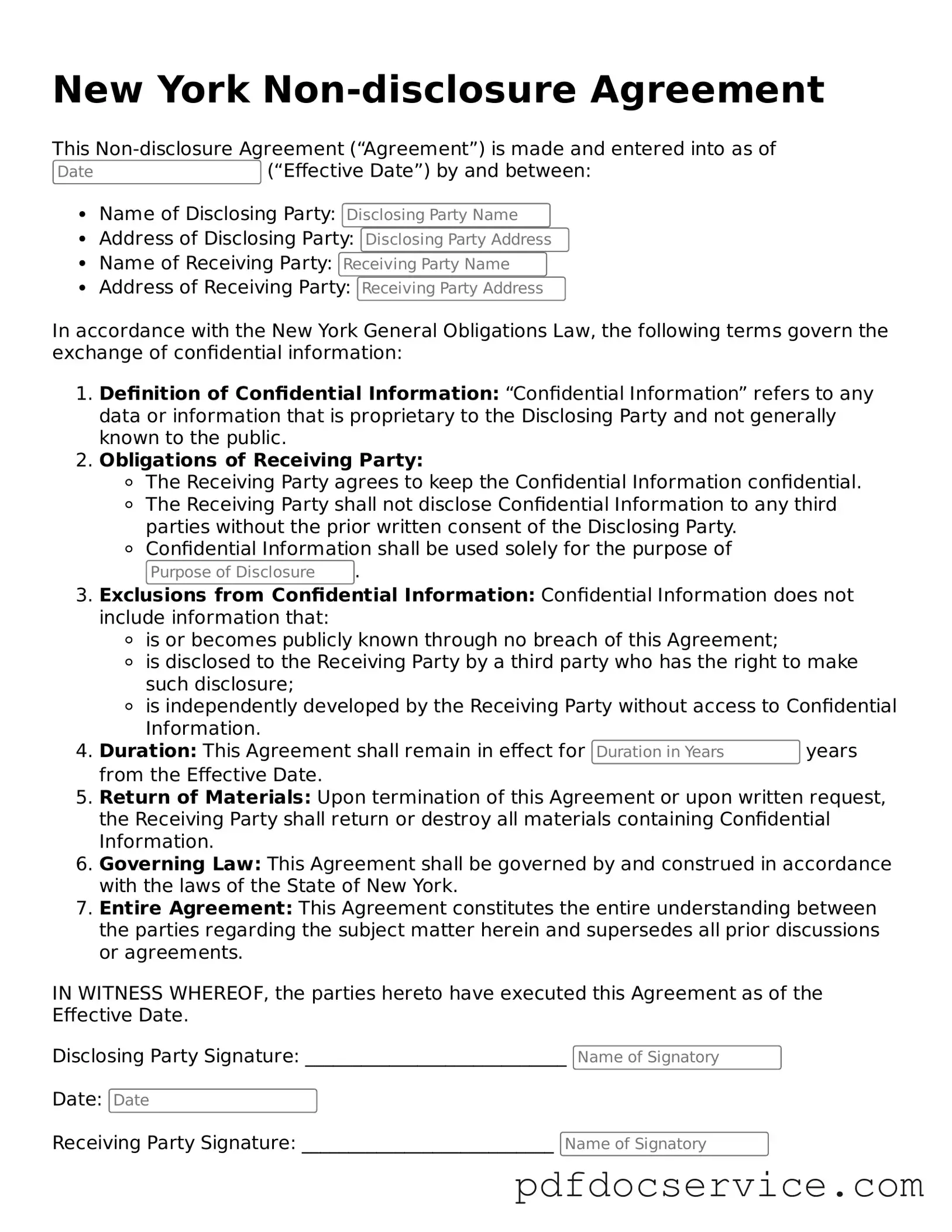What is a Non-disclosure Agreement (NDA) in New York?
A Non-disclosure Agreement (NDA) is a legally binding contract that protects confidential information shared between parties. In New York, it ensures that sensitive information, such as trade secrets or proprietary data, remains private and is not disclosed to unauthorized individuals.
When should I use a Non-disclosure Agreement?
You should consider using an NDA when:
-
You are sharing sensitive business information with potential partners or investors.
-
You are hiring employees or contractors who will have access to confidential information.
-
You are discussing a merger or acquisition where sensitive details need to be exchanged.
What are the key components of a New York NDA?
A typical NDA in New York includes the following key components:
-
Definition of Confidential Information:
Clearly outlines what information is considered confidential.
-
Obligations of the Receiving Party:
Details the responsibilities of the party receiving the information to protect it.
-
Duration of Confidentiality:
Specifies how long the information must remain confidential.
-
Exclusions:
Lists any information that is not covered by the NDA.
-
Consequences of Breach:
Describes the penalties for violating the agreement.
How long does an NDA last in New York?
The duration of an NDA can vary. Typically, the confidentiality obligations last for a specified period, which can range from one year to several years. Some NDAs may also state that certain information remains confidential indefinitely, especially if it pertains to trade secrets.
Can I modify a Non-disclosure Agreement?
Yes, you can modify an NDA. Both parties must agree to any changes. It’s essential to document these modifications in writing to ensure clarity and enforceability. Always consult with a legal professional when making significant changes.
What happens if someone breaches the NDA?
If a party breaches the NDA, the other party may pursue legal action. This could involve seeking damages for any losses incurred due to the breach. The NDA should outline the consequences of a breach, which may include financial penalties or injunctions to prevent further disclosure.
Is a Non-disclosure Agreement enforceable in New York?
Yes, NDAs are generally enforceable in New York, provided they meet specific legal requirements. The agreement must be clear, reasonable in scope, and not overly restrictive. Courts will enforce NDAs that protect legitimate business interests while ensuring they do not infringe on an individual's right to work.
Do I need a lawyer to draft a Non-disclosure Agreement?
While it is possible to create an NDA without a lawyer, consulting with one is highly recommended. A legal professional can help ensure that the agreement is comprehensive, enforceable, and tailored to your specific needs. This can save you time and potential legal issues in the future.
